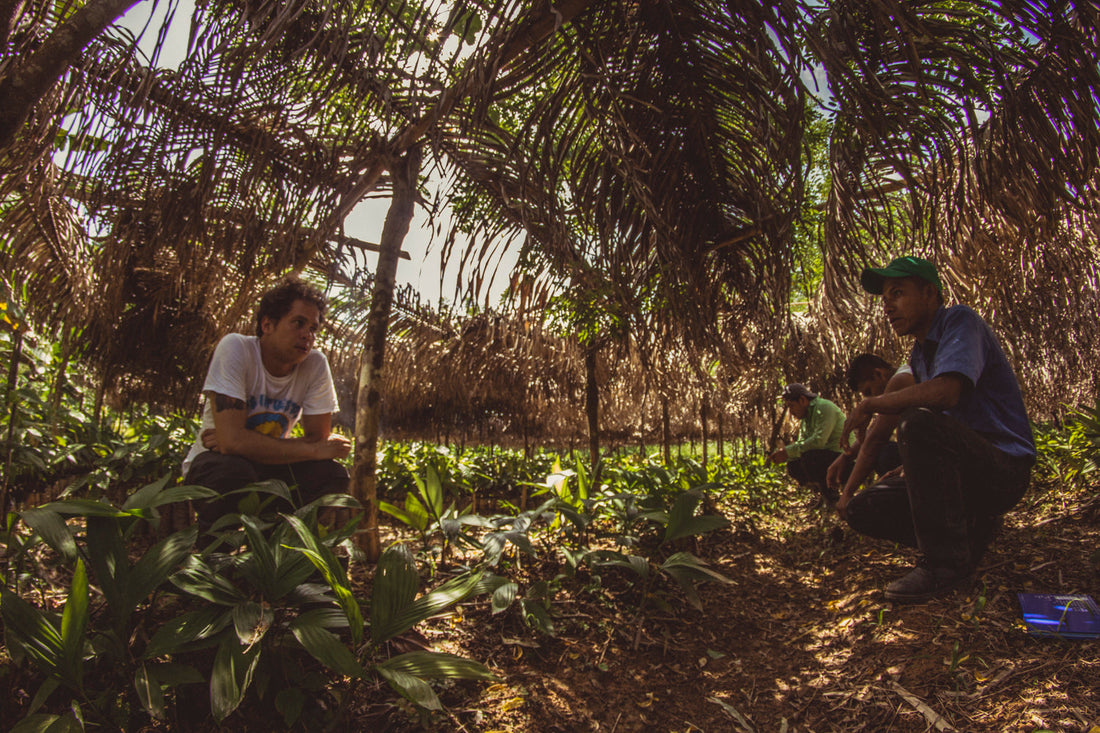
Cacao Origins & Climate: How Guatemala’s Terroir Shapes Chocolate Flavor
Chocolate is more than a treat, it’s a reflection of the land it comes from. At Chocolates Sero, we believe that understanding terroir is essential to appreciating fine chocolate. Guatemala’s diverse geography and microclimates give rise to cacao beans with distinct flavor profiles, shaped by altitude, rainfall, and soil composition.
Taste the Difference
Each origin tells a story of land, climate, and the hands that cultivate it. Discover how Guatemala’s terroir shapes the flavor of our chocolate.
-
AJ ASIPASM (Alta Verapaz – Polochic Valley): Fruity, earthy, and woody. Grown by small producers near a biodiverse reserve, this origin delivers the most impactful flavor in our collection.
-
Kampura (Izabal): Floral and layered. Cultivated near the Caribbean coast, Kampura cacao reflects humid forest ecosystems and a gentle complexity.
-
Agua Blanca (Escuintla): Smooth and bold. Sun-drenched lowland cacao with a resilient character and clean finish.
-
El Tesoro (Escuintla): Fermented and tropical. Volcanic soils and hotter conditions shape this origin’s intense flavor profile.
Regional Contrast: Alta Verapaz, Izabal & Escuintla
Though all our cacao grows between 300–900 meters above sea level, regional climates and ecosystems create distinct sensory experiences.
-
Alta Verapaz (AJ ASIPASM): Cooler microclimates, forest and cloud shade, and biodiversity yield cacao with depth and nuance.
Alta Verapaz is also home to Maya Q'eqchí communities that have been cultivating cacao for many generations, in this región, cloudy forests combine with ancient Maya traditions that include the harvesting and post-harvesting of cacao. -
Izabal (Kampura): Caribbean humidity and rich forest cover produce floral, expressive cacao.
Izabal has some of the richest lands in Guatemala, combined with a humid, hot weather it creates the perfect environment for the cacao tree to grow. Kampura is a perfect example of what the climate of Izabal is capable off, they use no fertilizers and only grow their cacao using the minerals they find in their soil. -
Escuintla (El Tesoro & Agua Blanca): Pacific lowlands with volcanic soil and hotter air make cacao an alternative to regenerate the South Coast land, mixed with the rise in cacao prices, the whole Southern Coast of Guatemala might be a new cacao powerhouse.
Agua Blanca is the perfect example of a farm that fully inmerses in this cacao ecosystem, They have traditionally grown fruits like mango, lemon, avocadoes, but now these trees give shadow to the future of the farm, fine cacao.
Finca El Tesoro just invested in 200 Hectares of land to grow cacao. If this trend continue, The South Coast of Guatemala might become the land with most cacao in the country very quickly.
These contrasts between the origins, as well as the human factor and practices, shape the flavor journey of each Chocolates Sero bar.
Microclimates Matter
Guatemala’s topography creates dramatic shifts in climate over short distances. In 2 hours you can go from the freezing mountains to hot and humid tropical valleys. These is also true around the lowlands of Guatemala, each lowland has its own characteristics, making the cacao harvesting slightly different between each other.
-
Rainfall & Humidity: Influence fermentation speed and microbial diversity.
In Cahabón humidity is high, cloudy skies help the land stay cooler than other lowlands, and this generates the perfect weather for cacao to thrive. Historically, Cahabón in Alta Verapaz is maybe the area with more cacao in the country.
In Izabal, heavy rainfall and hot mornings make the climate very humid, perfect for cacao to grow. Lately, cacao has become an important crop around this area, competing with rubber trees, palm trees and banana. All of this crops are grown in a monoculture way, fine cacao thrives in agroforestry. -
Soil Composition: Impacts mineral uptake and flavor precursors.
Volcanic soil in the South Coast of Guatemala is full of minerals that create a unique enviroment for diferrent crops that are used for human consumption. Sugar is the main crop you find in this area as well as banana and coffee. Before the Conquista, this was the hub of cacao for the Aztecs, we think it can return to this.
These factors combine to create terroir, the “taste of place” that makes single-origin chocolate so compelling.
Why Origin Transparency Matters
Transparency matters because the only way to create real chocolate, is to trace and develop a whole ecosystem around the cacao crop. That is why we keep origins unique, so we can give a taste of the land, climate and culture it represents.
-
Ethical Sourcing: Each farm or cooperative is vetted for fair labor, environmental stewardship, and traceability.
-
Flavor Integrity: We preserve the natural character of each bean through careful roasting and minimal processing.
-
Cultural Respect: Our packaging and storytelling honor the communities behind the cacao.
When you choose Chocolates Sero, you’re not just buying chocolate—you’re supporting a system that values people, planet, and flavor.
Taste the Difference
Explore our single-origin bars to experience how terroir transforms cacao into chocolate.
Each bar is a passport to Guatemala’s rich cacao heritage.